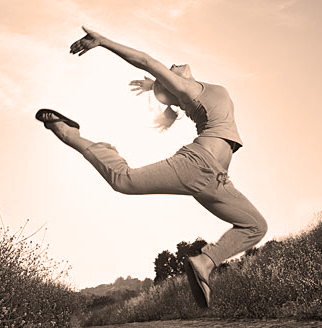I think we can all agree that dancing is a true source of joy. It is a stress reliever, a soul lifter, a time to let go and lose yourself in rhythm and tempo. Attending a PlyoJam class can almost be a spiritual experience, where we can work out our bodies and minds and be ready to face a new day. Dancing does so many wonderful things for the mind and the spirit, which we could talk about forever! But, today we want to focus on one of the significant physical health benefits that dancing lends our bodies. That benefit is the increase in bone mass, and the prevention and reduction of bone loss.
Did you know that peak bone mass, when bones reach their maximum strength and density, occurs by about age thirty in women? Thirty seems young! We were shocked, too! What this means is prior to age thirty, women should be doing everything possible to achieve a higher peak bone density. After age thirty, women don’t usually see a significant change in their bone density for a while, but it’s extremely important to maintain their peak bone density. And of course, as women reach their fifties, it’s crucial to reduce the chance of bone loss. According to Dorothy Klock, MD, Board Certified Family Physician AND one of our very own PlyoJam students, “After menopause, women begin to experience bone loss, which continues throughout the postmenopausal years and can lead to osteoporosis.” Osteoporosis is a disease that causes bones to become weak and brittle, often leading to fractures and breaks. And, since we love our PlyoJammers and don’t want to see any broken hips or fractured ankles on the dance floor, we are here to stress the importance of keeping your bones healthy and strong. While there are numerous factors that affect peak bone mass including gender, race, hormonal factors, and nutrition, experts agree that exercising is crucial to bone health. Like muscle, bone is living tissue that responds to exercise by becoming stronger.
Specifically, weight-bearing exercises will help to maintain bone strength and prevent loss. What is a weight-bearing exercise? According to Dr. Klock, “A weight-bearing exercise is one in which you must exercise against gravity, such as walking, hiking, tennis, jogging, and DANCING!” An example of a non weight-bearing exercise would be swimming. While swimming is still an excellent form of cardio exercise, it does not include the weight-bearing benefits that other exercises provide. Along with a nutrient rich diet, particularly rich in nutrients such as calcium and vitamin D, we want you to keep those dancing shoes polished and continue to dance, dance, dance! We want our PlyoJam family to be of healthy mind, heart and body, which most definitely includes healthy, strong bones! Whether you are working to achieve a higher bone mass, maintain that mass, or working to prevent the loss of bone mass in your postmenopausal years, dancing benefits women of all ages. Just another bonus in the wonderful world of dance! See you on the dance floor!
[Sassy_Social_Share]

